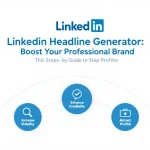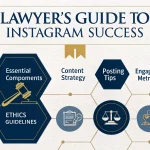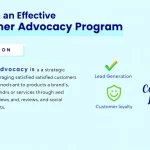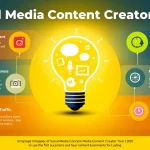Is this tool helpful?
How to Use the Social Selling Strategy Generator Effectively
This tool helps you craft tailored social selling strategies by analyzing your business details, products, target audience, and challenges. To get the best results, carefully fill in each field as described below.
1. Company Name
Enter your company’s official name for clear identification. Examples:
- NextGen Health Solutions – A medical technology startup
- BrightPath Educational Services – An online tutoring platform
2. Products/Services Description
Describe your main products or services, emphasizing what makes them unique or valuable. Examples:
- “We provide cloud-based electronic health record systems that improve hospital workflow and patient data security.”
- “Our platform offers personalized learning paths using AI to boost student engagement and retention.”
3. Target Audience
Define your ideal customers with specific traits such as industry, size, or location. Examples:
- “Hospital administrators in regional medical centers with 100-500 beds.”
- “Parents of K-12 students seeking supplementary online education in urban areas.”
4. Customer Pain Points
List the main problems your audience faces that your products or services solve. Examples:
- “Inefficient patient record management causing delays in care.”
- “Limited access to quality tutoring resources during school closures.”
5. Optional Fields
Provide these details for more personalized recommendations:
- Social Selling Team Size: Number of employees actively involved in social selling.
- Preferred Social Platform: Primary social network you want to focus on (e.g., LinkedIn, Twitter).
Engaging Introduction: What the Social Selling Strategy Generator Does and Its Benefits
The Social Selling Strategy Generator builds a customized plan to boost your sales using social networks. It aligns your team’s outreach with your business goals to create meaningful connections, improve engagement, and nurture leads effectively.
Why Use This Tool?
- Speed: Get a full social selling strategy in minutes rather than weeks.
- Customization: Receive recommendations tailored to your industry, audience, and product offerings.
- Scalability: Strategies fit teams of any size, from solo sales reps to large sales forces.
How It Works
You provide detailed information about your company, products, audience, and challenges. The tool analyzes this data and generates a practical social selling plan that covers:
- Optimizing your social network connections to target key prospects
- Creating effective content strategies for sharing relevant posts
- Engagement tactics to start and maintain conversations
- Lead nurturing ideas to convert connections into customers
Practical Use Cases for the Social Selling Strategy Generator
Case 1: SaaS Startup
Input:
- Company: DataPulse Analytics
- Products/Services: Real-time data visualization dashboards
- Target Audience: Marketing managers in e-commerce businesses with 50-200 employees
- Pain Points: Difficulty tracking campaign performance effectively
Generated Strategy Includes:
- LinkedIn outreach emphasizing case studies
- Sharing educational content on data-driven marketing
- Personalized messaging to marketing decision-makers
Case 2: Manufacturing Supplier
Input:
- Company: Precision Parts Co.
- Products/Services: Custom automotive components
- Target Audience: Procurement officers in automotive OEMs
- Pain Points: Long supplier approval cycles and strict quality requirements
Generated Strategy Includes:
- Industry-specific LinkedIn group engagement
- Posting behind-the-scenes content on quality assurance
- Direct outreach highlighting certifications and turnaround times
Social Selling Strategy Best Practices and Key Benefits
Key Components of a Successful Social Selling Strategy
- Network Optimization: Connect with decision-makers and influencers relevant to your industry.
- Content Strategy: Share educational, insightful, and company-relevant information to build credibility.
- Engagement Tactics: Actively participate in conversations and respond promptly to interactions.
- Lead Nurturing: Follow up strategically to turn connections into opportunities.
Benefits of Using the Generated Strategy
- Time-saving: Streamline your social selling planning process.
- Personalized Approach: Focus on tactics that match your unique business context.
- Scalable Execution: Adapt strategies as your team or goals evolve.
Frequently Asked Questions About Social Selling Strategy
What is social selling?
Social selling means using social media platforms to find, connect with, and nurture potential customers. It helps you build trust and relationships before sales conversations.
How long does it take to see results?
Initial engagement often appears within 1 to 3 months, with stronger sales impact building over 6 to 12 months of consistent effort.
Which social platform works best for my industry?
LinkedIn is typically best for B2B professionals, while platforms like Instagram or Facebook may suit B2C sectors. Choose based on where your target audience spends most of their time.
How many team members should join social selling?
Start with 3-5 dedicated team members to ensure quality and coordination. You can expand as your efforts grow.
Should I focus on one platform or many?
Focus on mastering one social platform first. This creates consistent messaging and better engagement before branching out.
How often should team members post content?
Aim for 3 to 5 quality posts weekly that offer insight, education, or relevant updates to your audience.
Can social selling replace traditional sales?
Social selling complements traditional techniques, creating a more integrated and modern sales approach.
What content types perform best in social selling?
Use a balance of educational material (40%), industry news and insights (30%), and company updates or case studies (30%).
How can I measure social selling success?
Track metrics such as Social Selling Index (SSI), engagement levels, network growth, and how social activities contribute to your sales pipeline.
Is social selling effective in all industries?
Yes. You just need to adjust your approach and platforms to fit your industry’s communication style and buyer behavior.
Important Disclaimer
The calculations, results, and content provided by our tools are not guaranteed to be accurate, complete, or reliable. Users are responsible for verifying and interpreting the results. Our content and tools may contain errors, biases, or inconsistencies. Do not enter personal data, sensitive information, or personally identifiable information in our web forms or tools. Such data entry violates our terms of service and may result in unauthorized disclosure to third parties. We reserve the right to save inputs and outputs from our tools for the purposes of error debugging, bias identification, and performance improvement. External companies providing AI models used in our tools may also save and process data in accordance with their own policies. By using our tools, you consent to this data collection and processing. We reserve the right to limit the usage of our tools based on current usability factors.







